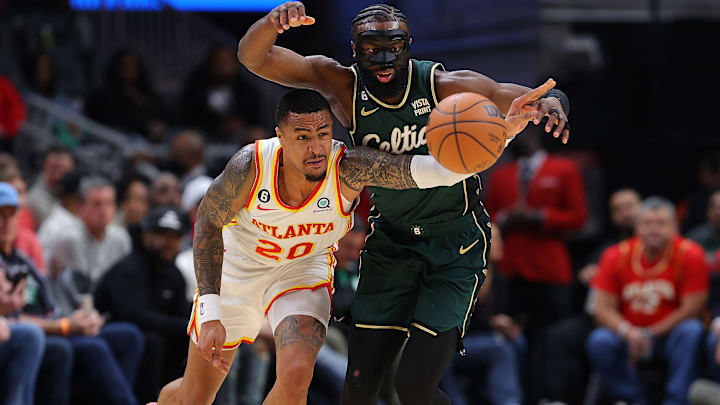In just about every basketball broadcast, at some point, someone brings up the turnover battle. In a league where the difference between the best and worst offense was roughly 0.1 points per possession last season, a game can come down to who has more bites at the possessions apple, and nothing swings that battle quite like a turnover.
It’s common sense that turnovers are costly. It’s an extra possession for your opponent to score and a possession where you come up empty-handed. However, in a sport about points, a lost possession doesn't mean anything if it doesn't cost you points.
How many points is a turnover worth in the NBA?
Last season, teams averaged 1.20 points per possession following a turnover. The Sacramento Kings set the NBA single-season record for offensive rating at 119.4, or 1.19 points per possession. Every turnover effectively turns your opponent’s next possession into the greatest offense in NBA history.
While it’s bad enough that turnovers can turn an average offense into a juggernaut, that’s not the only cost. A turnover guarantees zero points, and that’s significant. Last season, the league average true shooting percentage came in at 58.1 percent. This means that when a team is able to get a shot off, they score 1.16 points on average. A turnover turns that into 0.
When you add up the benefit of a turnover for the opponent and the lost opportunity to get a shot up, a single turnover, on average, is a 2.36 point swing in the game. While this is a rough average, some types of turnovers are more costly than others, it shows how much ground can be won or lost by winning the turnover battle.
Turnovers are the cost of doing business in the NBA
For as costly as turnovers are, they shouldn’t be avoided like the plague because the cost of generating high-quality offense is turnovers. Every drive to the basket or threaded pass increases the risk of a turnover, but it also increases your team’s chances of scoring. The dynastic Golden State Warriors have long been a turnover-heavy operation, but the positive effects it has on their shot quality trumps the cost of losing the possession battle.
While the turnover battle is well understood in a team-wide context, the individuals committing them often get a free pass. There are players whose inability to protect the ball is holding themselves and their teams back from reaching another level, and it’s especially detrimental if they aren’t able to offset their turnovers with a steady flow of assists. The average points generated per assist last season was 2.4 points, which means every turnover erases 98.3 percent of every assist.
To determine the players who would benefit most from reigning in their turnovers, I compared their expected points lost per turnover (2.36 multiplied by total turnovers) to their expected points added through passing (2.4 multiplied by total assists) and normalized it to their per 36 minute rate to create assist-to-turnover points added. The figure gives us a rough measure of how each individual player’s assist-to-turnover ratio is helping or hurting their team.
Positional distinctions had a massive impact on a player’s turnover and assist totals. Following conventional basketball wisdom, as a player slides down the positional spectrum their assist-to-turnover ratio improves dramatically. To prevent a list exclusively comprised of centers, I compared each player to their assigned positional distinction according to Basketball Reference. The average center, through assist-to-turnover points added, added 1.18 points per 36 minutes, power forward came in at 2.53, small forward at 2.73, shooting guard at 4.05, and point guard at 9.69.
